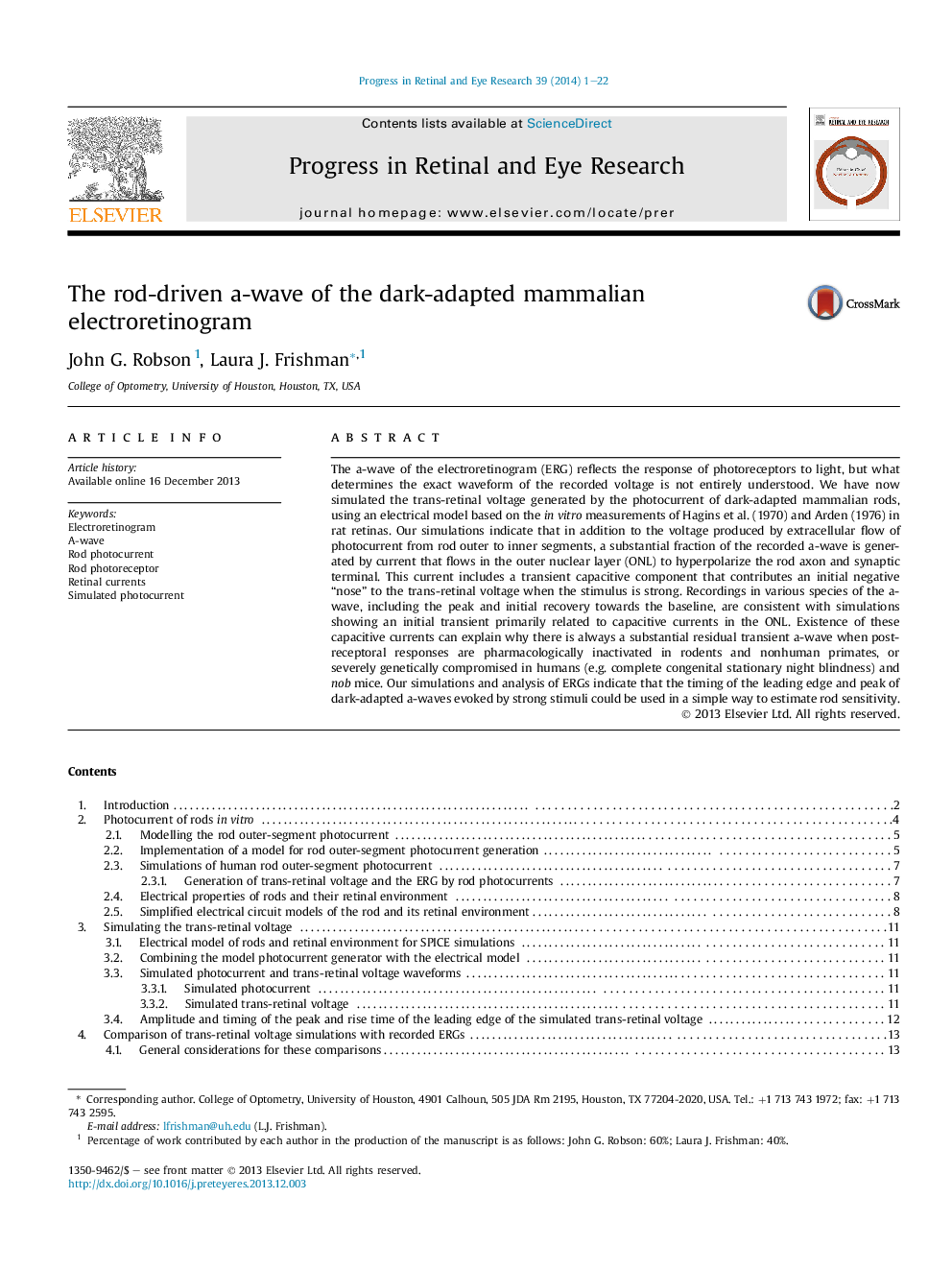| Article ID | Journal | Published Year | Pages | File Type |
|---|---|---|---|---|
| 4031952 | Progress in Retinal and Eye Research | 2014 | 22 Pages |
The a-wave of the electroretinogram (ERG) reflects the response of photoreceptors to light, but what determines the exact waveform of the recorded voltage is not entirely understood. We have now simulated the trans-retinal voltage generated by the photocurrent of dark-adapted mammalian rods, using an electrical model based on the in vitro measurements of Hagins et al. (1970) and Arden (1976) in rat retinas. Our simulations indicate that in addition to the voltage produced by extracellular flow of photocurrent from rod outer to inner segments, a substantial fraction of the recorded a-wave is generated by current that flows in the outer nuclear layer (ONL) to hyperpolarize the rod axon and synaptic terminal. This current includes a transient capacitive component that contributes an initial negative “nose” to the trans-retinal voltage when the stimulus is strong. Recordings in various species of the a-wave, including the peak and initial recovery towards the baseline, are consistent with simulations showing an initial transient primarily related to capacitive currents in the ONL. Existence of these capacitive currents can explain why there is always a substantial residual transient a-wave when post-receptoral responses are pharmacologically inactivated in rodents and nonhuman primates, or severely genetically compromised in humans (e.g. complete congenital stationary night blindness) and nob mice. Our simulations and analysis of ERGs indicate that the timing of the leading edge and peak of dark-adapted a-waves evoked by strong stimuli could be used in a simple way to estimate rod sensitivity.
